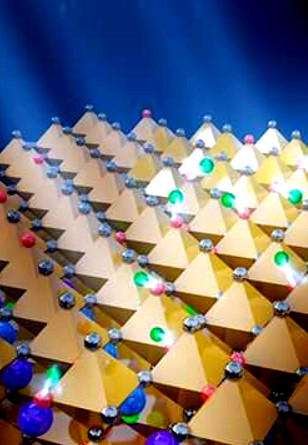Cells padded with potassium
 Researchers are doping new solar cells to improve their performance and speed up their run to commercialisation.
Researchers are doping new solar cells to improve their performance and speed up their run to commercialisation.
Next-generation solar cells, known as perovskite solar cells, are already more efficient than current commercially-available solar cell technologies, but they have some issues that are limiting their broad use.
New studies have shown that ‘doping’ the cells with a performance enhancing chemical, triggered by sunlight, improves their stability, making them a better prospect for commercialisation.
The crystals that make up perovskite cells have defects, known as traps, which lowers their efficiency. They also suffer from instability in sunlight – clearly a big problem for a solar cell.
Previous studies have been able to overcome these issues by ‘doping’ the solar cells with potassium to enhance their performance.
Scientists knew the doping worked, but until now they did not know how or why.
This new research shows potassium allows sunlight to trigger a healing process, getting rid of the defects and also improving the stability of the cells.
“Sunlight becomes a trigger for the positive formation of potassium bromide-like compounds, eliminating the interface traps and stabilising the mobile ions, thus resulting in improved power conversion efficiency,” says author Dr Weijian Chen from Swinburne University.
“This research contributes to the rationalisation of the improved performance and guides future design protocol of better solar cells.” Dr Xiaoming Wen, senior research fellow at Swinburne, adds.
“The demonstrated solar cell characterisation methods are at the cutting edge, and will help our industry partners develop a new protocol for commercial perovskite solar cells,” said Professor Baohua Jia.
The latest studies were led by Swinburne University of Technology in collaboration with Wuhan University of Technology in China, the University of Melbourne, and the University of Adelaide.







 Print
Print